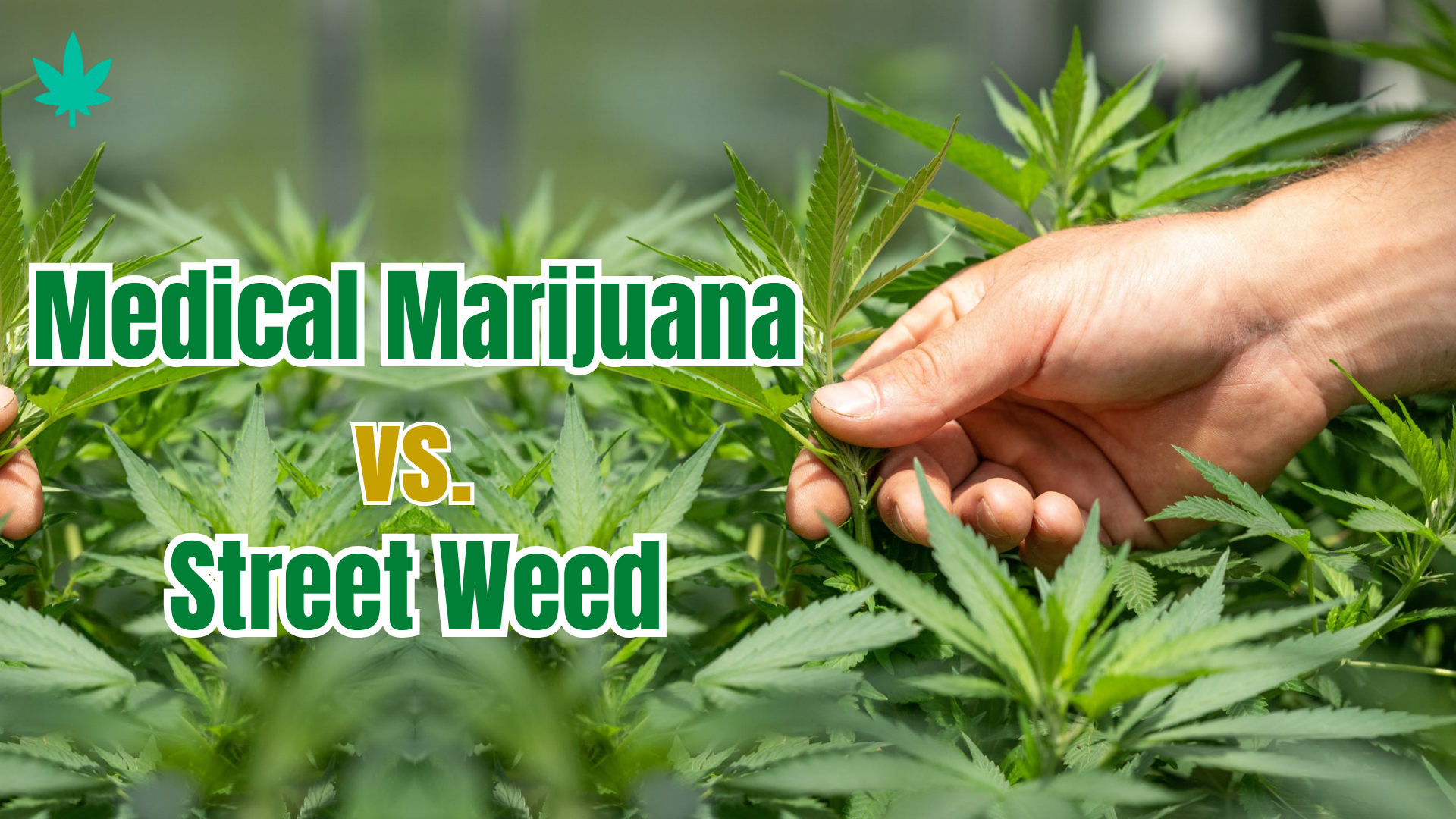1. Purpose and Intent
One of the primary differences between medical marijuana and street weed lies in their intended use.
Medical Marijuana: This is specifically grown and prescribed for medical purposes. It is used to treat various conditions such as chronic pain, anxiety, epilepsy, and multiple sclerosis. Doctors may recommend specific strains or doses based on the patient’s medical needs, ensuring that the benefits outweigh any potential risks.
Street Weed: Commonly obtained for recreational use, street weed is typically used to achieve a psychoactive high. While some users might use it to self-medicate, it lacks the regulation and oversight of medical marijuana, which can lead to inconsistencies in potency and effects.
2. Production and Regulation
Production methods and regulation standards are other areas where medical marijuana and street weed differ significantly.
Street Weed: The production of street weed is largely unregulated. Growers might use various methods to increase yield, which can sometimes involve harmful chemicals or pesticides. There is no mandatory testing for potency or contaminants, meaning that users cannot be sure of what they are consuming. This lack of regulation can result in variations in strength and quality, making it less safe compared to medical marijuana.
3. Potency and Composition
The potency and chemical composition of marijuana can vary widely between medical marijuana and street weed, affecting both its therapeutic benefits and risks.
Medical Marijuana: Medical marijuana is often bred to contain specific levels of THC (tetrahydrocannabinol) and CBD (cannabidiol) based on medical needs. For example, some patients may require high-CBD strains for seizure control, while others might need a balanced THC-CBD ratio for pain management. The consistency in composition ensures that patients can expect similar effects with each use.
Street Weed: The potency of street weed can be unpredictable. Growers often focus on creating strains with high THC levels to maximize the psychoactive effects, which might not be suitable for all users, especially those with medical conditions. Additionally, the lack of regulation means that the actual THC and CBD levels can differ from what is claimed by sellers, leading to a higher risk of adverse effects such as anxiety or paranoia.
4. Safety and Side Effects
Safety is a significant concern when comparing medical marijuana and street weed.
Medical Marijuana: Given its regulated nature, medical marijuana is considered safer for consumption. The controlled growing conditions and rigorous testing reduce the risk of exposure to contaminants like mold, pesticides, and other harmful substances. Additionally, medical marijuana is prescribed by healthcare professionals who can monitor for side effects and adjust treatment as needed. Patients are also informed about potential interactions with other medications, making it a safer option for those with underlying health conditions.
THC vs. CBD for Pain Relief: What’s Better?
Street Weed: Street weed carries a higher risk of contamination due to the lack of regulatory oversight. The presence of mold, pesticides, or even other drugs can lead to unexpected side effects or health risks. Moreover, the inconsistent potency of street weed can make it difficult to predict its effects, increasing the risk of negative experiences, especially for novice users or those with pre-existing mental health conditions.
5. Access and Legal Considerations
The legality and accessibility of medical marijuana and street weed are also key differences that impact users.
Medical Marijuana: In regions where medical marijuana is legal, patients typically need a prescription or recommendation from a licensed healthcare provider. This prescription allows them to purchase marijuana from licensed dispensaries that adhere to local laws and regulations. The legal status of medical marijuana also means that patients have legal protection when using it for prescribed conditions.
Street Weed: Street weed is often purchased illegally, which can have significant legal repercussions, depending on the jurisdiction. In areas where recreational marijuana remains illegal, possession or use of street weed can lead to fines, arrest, or other legal consequences. Additionally, the lack of legal protection means that users of street weed have little recourse if they experience adverse effects from a contaminated or mislabeled product.
6. Cost and Availability
Cost and availability can differ significantly between medical marijuana and street weed.
Medical Marijuana: While the cost of medical marijuana can vary depending on the strain and form (e.g., flower, oils, edibles), it is often higher than street weed due to the stringent regulations and testing involved. However, many regions offer programs to assist patients with the cost of medical marijuana, making it more accessible to those in need. The availability of specific strains and products is also generally better in licensed dispensaries, which cater to the medical market.
Street Weed: Street weed is typically less expensive than medical marijuana, but this lower cost comes with the risks associated with unregulated production. Availability can also be more inconsistent, as users are limited to what is available on the black market, which can vary in quality and safety.
7. Impact on Health
The long-term impact on health is another important consideration when comparing medical marijuana and street weed.
Medical Marijuana: When used under medical supervision, medical marijuana can offer significant therapeutic benefits with manageable side effects. Patients using medical marijuana are often under the care of a healthcare provider who can monitor their use and adjust their treatment plan as needed. This professional oversight helps to minimize risks and ensures that the patient is using marijuana safely.
While medical marijuana and street weed may come from the same plant, their differences are vast and significant. Medical marijuana offers a safer, more consistent, and legally protected option for those seeking therapeutic benefits, thanks to its regulated production and medical oversight. On the other hand, street weed, with its unregulated production and potential legal risks, carries more uncertainties and potential dangers. Understanding these differences can help users make informed decisions, whether they’re considering marijuana for medical purposes or recreational use. As the legal landscape continues to evolve, the distinction between medical and street marijuana will remain a crucial factor for users to consider.
Frequently Asked Questions
Medical marijuana is regulated and tested for quality, potency, and safety, while street weed is often unregulated and can vary in quality and composition.
Medical marijuana typically has consistent potency and is cultivated to target specific conditions, while street weed’s strength can be unpredictable.
Yes, medical marijuana is legal with a prescription in many areas, whereas street weed may be illegal, depending on local laws.
Yes, medical marijuana is tested for harmful substances like pesticides and mold, making it generally safer than street weed, which is not regulated.
While some people use street weed for health conditions, it lacks the quality control and consistency of medical marijuana, making it less reliable for therapeutic use.




